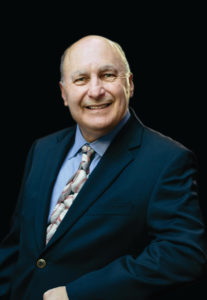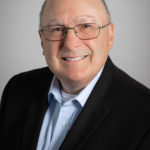Dental products like those nominated for Edison Awards are spectacular—but spare a thought as well for what their inventors endured in their creation.
NONE OF HISTORY’S most significant innovations, it’s safe to say, was either quick or easy to bring into being. In this issue, we celebrate the Edison Awards for the top new dental products of the year. We hope they’ll end up making a difference—but success is never guaranteed.
How many times did the Edisons’ namesake fail, after all? In an 1890 interview with Harper’s Monthly magazine, Thomas Edison described “3,000 different theories in connection with the electric light bulb, each one of them reasonably true. . . . In only two cases did my experiments prove the truth of my theory [about] the carbon filament.”
Sir James Dyson, of vacuum-cleaner fame, went through 5,127 prototypes over 15 years before perfecting his bag-free “cyclone technology” design. In dentistry, Michael Buonocore of the Eastman Dental Center experimented with many reagents before finally determining that the phosphoric-acid liquid of zinc phosphate cement applied to enamel for 60 seconds, then painting the enamel with an acrylic resin. He published his data in 1955.
 For the composite resins we use, Ray Bowen’s 1962 patent for the use of organosilane to chemically pre-treat glass fillers was hardly an overnight discovery. In the late 1980s, working in Dr. Bowen’s laboratory at the National Institute of Standards and Technology, I spent hundreds of hours treating glass fillers to look for a better composite. These sorts of tests are done thousands of times in dental manufacturers’ labs to develop better materials. Hundreds of lab workbooks are filled with the failures—the products we never see.
For the composite resins we use, Ray Bowen’s 1962 patent for the use of organosilane to chemically pre-treat glass fillers was hardly an overnight discovery. In the late 1980s, working in Dr. Bowen’s laboratory at the National Institute of Standards and Technology, I spent hundreds of hours treating glass fillers to look for a better composite. These sorts of tests are done thousands of times in dental manufacturers’ labs to develop better materials. Hundreds of lab workbooks are filled with the failures—the products we never see.
How can we honor dentistry’s greatest innovations while also recognizing the undeniable importance of these failures? Every material and device comes with detailed instructions from the manufacturer. Don’t throw these away! In an era when instruction manuals are often available only online, we still get paper copies in boxes.
Don’t assume all bonding agents, composites and curing lights are the same. I’ve reviewed innumerable articles over the years in which the technique described was incorrect. In one recent review, the author discussed keeping enamel moist to enhance bonding with no reference. I checked that product’s instructions: not so!
A different author wrote of pre-treating lithium silicate for bonding with both hydrofluoric acid and air abrasion. The evidence shows that one can use only one or the other. I asked the author for evidence and still await an answer. Misinformation of this kind may be putting restorations and other treatments at risk.
Dental innovators have bestowed on us an outstanding present day for patient treatment, and the future is even more exciting. Honor these pioneers, without whose dogged persistence and, yes, repeated failures dentistry would be all the poorer. •
HOWARD STRASSLER, DMD is a professor and the director of operative dentistry at the University of Maryland School of Dentistry. He practices in Pikesville, Maryland.
Hints From Howard
The Big Switch
DO YOU FOLLOW the instructions for the products you’re using? Think how nice it would be if, when using a dental material during a procedure, you could type the product name into an app—a Waze for dentistry, say—to access the specs and instructions immediately. Unfortunately, that app doesn’t (yet) exist. As such, all dentists need to be vigilant when they change products: Don’t assume the techniques you’re using with your current item automatically transfer seamlessly to the new one. This episode of Hints From Howard offers some insight about the differences it’s worth keeping an eye out for when it comes to some common dental materials and devices.




